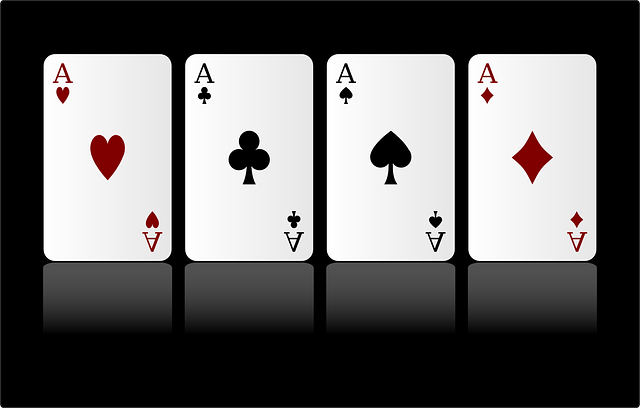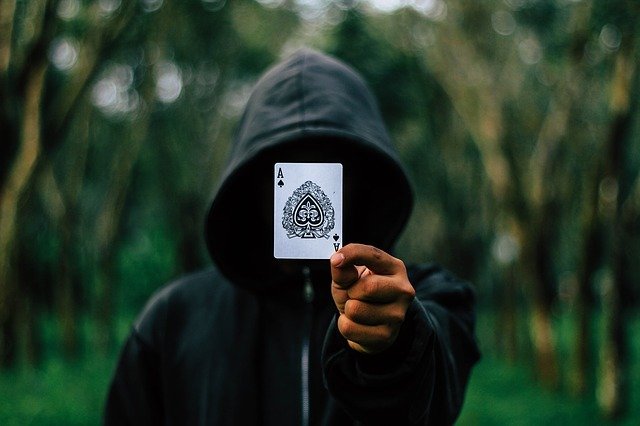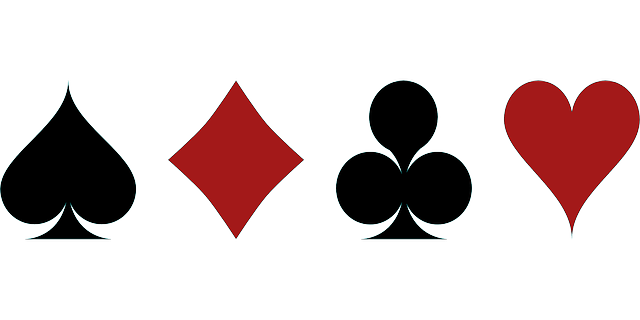Table of Contents
Poker

Poker is a family of card games in which players wager on which hand is the best based on the game’s rules in a manner similar to these rankings. While the game’s earliest known version utilized only 20 cards, it is now regularly played with a standard deck, with 32, 40, or 48 cards being used in places where short packs are common. While the deck design, number of cards in play, number dealt face up or face down, and number shared by all players all differ, all poker games involve one or more rounds of betting. In most modern poker games, the blind is a forced wager placed by one or more players at the start of the betting round. In conventional poker, each player bets according to the perceived value of their hand in contrast to the other players. The action then goes clockwise, with each player having to either match or call the preceding stake’s maximum total, or fold, forfeiting both the amount risked and any future engagement in the hand. When a player matches a wager, he or she can choose to raise the stakes. The betting round ends when all players have either called or folded the last stake.
If everyone but one player folds in a round, the remaining player takes the pot without having to show their hand. If more than one person remains in the game after the last betting round, the hands are revealed, and the player with the best hand wins the pot.
Card games in which a player wagers that his or her hand is worth more than other players’ hands, in which each subsequent player must either match or raise the bet or drop out and in which the player with the best hand at the end of the betting wins the pot. Money is only freely thrown into the pot by a player who believes the bet has a positive expected value or is attempting to bluff other players for various strategic reasons, with the exception of early forced bets. While chance has an impact on the outcome of each individual hand, the players’ long-term expectations are determined by their actions, which are based on probability, psychology, and game theory. Poker has grown in popularity since the turn of the century, transitioning from a primarily recreational activity enjoyed by a small group of enthusiasts to a widely popular activity enjoyed by both participants and spectators, including online, with many professional players and multimillion-dollar tournament prizes.
Poker was created in the early nineteenth century in the United States. The game has evolved to become a very popular hobby all around the world since its debut.”The Persian game of As-Nas,” R. F. Foster said in the 1937 edition of Foster’s Complete Hoyle, “is presumably the game of poker, as initially played in the United States, five cards to each player from a twenty-card pack.” Some gaming historians, such as David Parlett, began to doubt whether poker is a direct descendent of As-Nas in the 1990s. Poker became substantially more popular than it had been previously as a result of advancements in the 1970s. After the World Series of Poker debuted in 1970, modern tournament play became popular in American casinos. During the millennium, poker’s popularity grew due to its appearance on television. A few years later, from 2003 and 2006, there was a poker boom.
How to Play Poker

In casual play, the right to deal with a hand rotates among the players and is denoted by a token known as a dealer button or buck. For each hand, a house dealer deals the cards, but the button, which is commonly a white plastic disc, is rotated clockwise among the players to signify a notional dealer and establish the betting order. The cards are dealt clockwise around the poker table, one by one. In most games, one or more players must make forced wagers, which are usually an ante or a blind bet but can also be both. The dealer shuffles the cards, the player to his right cuts, and the dealer distributes the required number of cards to the players one by one, beginning with the one to his left. Cards may be dealt face up or face down, depending on the sort of poker being played. Following the original contract, the first of what might be several betting rounds begins. Players’ hands alter in some way between rounds, either by being dealt more cards or by replacing cards that have previously been dealt. At the end of each round, all bets are collected and placed in the central pot. If one player bets and no opponents call or match, and all opponents fold, the hand ends immediately, the bettor is awarded the pot, and no cards must be shown, and the next hand begins. This is how bluffing can be done. Bluffing is a distinct feature of poker that distinguishes it from other competitive games and games that use poker hand rankings. When more than one player remains at the end of the last betting round, the players reveal their previously secret cards and analyze their hands in a showdown. Depending on the type of poker being played, the player with the better hand wins the pot. Inversions when a player possesses more than five cards, only the best five-card combination is considered. Two of the ten different poker hands are the straight flush and four of a kind.
1) Each participant at the table is dealt two-hole cards, one face down and the other face up. It’s as simple as that.
2) Five community cards: Each player then constructs their best five-card poker hand by combining those two cards, one or none of them, with five community cards that have been shared.
3) Form the best hand: The player who forms the best hand or persuades all other players to fold wins the pot.
4) Place as many chips as you like in the middle: There are four rounds of betting, and any player can place all of their chips in the middle at any time. This is the allure of No-Limit poker. You’re never more than one hand away from tripling or doubling your stack, but you’re never more than one hand from overflowing.
Basic Poker

Royal Flush is a combination of the words “royal (All the same suit, sequence A-K-Q-J-T)
Flush (straight) (Any sequence all the same suit, for instance, 9-8-7-6-5)
Four in a Row (Four cards that are the same value, for instance, A-A-A-A)
The entire house is occupied (Three of a kind AND a pair)
Float (All the same suit)
Three of a kind (a fundamental sequence such as 6-5-4-3-2) (Three cards that are the same value such as 5-5-5)
Pair (Any pair, whether it’s A-A or 2-2) High Card Two-pair (Two pairs, such as 9-9 AND 5-5) (Whatever your highest card is).
There are a variety of poker variations, all of which follow a similar play pattern and employ the same hand ranking system. The card-dealing and betting protocols separate the variants into four main groups:
● Straight: Each player is dealt an entire hand and must gamble in a single round, with raising and re-raising allowed. This is the oldest poker family; the game’s origins may be traced back to a game called Primero, which evolved into three-card brag, a popular gentleman’s game in the United Kingdom during the American Revolutionary War that is still played today. Despite the fact that five-card straight hands are occasionally utilized as a final showdown, poker is almost always played in a more complex style to allow for more strategy.
● Stud Poker: Cards are dealt in a prearranged order of face-down and face-up rounds, or streets, followed by a betting round. The second-oldest family, they were typically given one card at a time, face-up or face-down, with a betting round in between as poker grew from three to five-card hands. The most popular stud variant nowadays is a seven-card stud, which offers each player two extra cards three face-down, four face-up from which to build the best possible five-card hand.
● Draw Poker: Each player is dealt a whole hand, face-down, in a five-card draw. Following that, each player must add an ante to the pot. Then players can examine their cards and make wagers based on what they observe. Following their bet, players can discard up to three cards and replace them with new ones from the top of the deck. After that, there’s a new round of betting. Finally, each participant must show their cards, and the winner is determined by the best hand.
● Community Card Poker: Community card poker, sometimes known as “flop poker,” is a type of stud poker. Following the distribution of an unfinished hand of face-down cards to each player, a number of face-up community cards are dealt with the table’s center, each of which can be used by one or more players to build a five-card hand. Texas hold ‘em and Omaha are two well-known varieties of the community card family.
The structure of betting in a poker hand can be defined in a variety of ways. The three most common structures are “fixed-limit,” “pot-limit,” and “no-limit.” In fixed-limit poker, betting and raising must be done in predetermined sums. For example, if the required bet is X, an initial bettor may only place X; if a player wishes to raise a bet, they may only do so by X. In pot-limit poker, a player can bet or raise any amount up to the size of the pot. When calculating the maximum raise allowed, all previous bets and calls, including the intending raiser’s call, are first added to the pot. The raiser may then raise the previous stake to the full sum of the pot. A player in no-limit poker can stake their whole betting stack at any time during the game. In any game, if a player does not have enough betting chips to fully match a wager, they may go all in, which allows them to display their hand for the remaining chips.
While most poker games award the pot to the highest-ranking hand, there are a few variations where the best hand, and thus the pot-winning hand, is the lowest-ranking hand. The best hand in such games is made up of the lowest cards rather than the highest cards; some variations may be further complicated by whether or not flushes and straights are included in the hand rankings. “High low split” games are those in which the pot is shared between the highest and lowest hands.
Other games that employ poker hand rankings are sometimes referred to be poker. Most video poker machines play draw poker, in which the player places bets, receives a hand, and can discard and replace cards, similar to a slot machine. The player’s initial wager and the hand that emerges from the draw decide the reward.
When players lose bets, they must strip down to their underwear, a game known as strip poker. Because strip poker is based on the main premise of betting in rounds, it can be played with any type of poker; however, it is most usually based on simple variants with few betting rounds, such as a five-card draw.
Acey-Deucey or Red Dog poker has the same name as poker but is played in an entirely different way. The betting and structure are more like Blackjack; each player bets against the house and is dealt two cards. In order for the player to win, the third card dealt following the choice to raise the stake must have a value between the first two. The payment is determined by the likelihood of this occurring, which is based on the difference in the values of the first two cards. Other poker-like games played against the house in casinos include three card poker and pai gow poker.
Affirmations

1. I feel confident in my poker abilities.
2. Bluffing is something I’m quite good at.
3. In the game, I apply all of my knowledge.
4. I retain my focus on the task at hand.
5. My money is well-spent.
6. My bets are safe with me.
7. I am a skilled cash game poker player.
8. Cash poker is my favorite game.
9. I’m a seasoned cash game player.
10. My wagers are all logical.
11. Strategically, I’ll read my opponents.
12. I’m going to use all of my skills to their utmost potential.
13. I’ll look at everything from every perspective.
14. I’ll keep track of my spending.
15. My abilities will reach their maximum potential.
16. I’ll arrange my exit strategy.
17. I’ll play the cards I’ve been dealt.
18. I’m not going to take any significant risks.
19. I’ll be able to tell when it’s time to leave the table.
20. I’ll take the necessary risks.
21. I was destined to be a poker player.
22. When it comes to poker, I’m a naturally intuitive player.
23. Poker gives me the freedom to be myself.
24. When it’s time to back down, I instinctively know when to do so.
25. In poker, I always make sensible decisions.
26. All of my cash poker skills have been acquired.
27. Cash poker is my life.
28. Cash poker is a lot of fun.
29. At cash poker, I’m just a genius.
30. I have a natural aptitude for poker.
31. I am confident in my abilities to succeed.
32. I have the necessary abilities and talent to succeed.
33. I am deserving of great things, and I am deserving of victory.
34. I am blessed with financial success.
35. I’m ready for success and everything it has to offer.
36. I set lofty goals for myself in order to succeed.
37. I am exceptional in all I do.
38. I draw success to myself and am glad for it.
39. I was born to be a winner.
40. I am succeeding in realizing my full potential.
41. I am grateful for the abundance and favorable outcomes.
42. I’m going to win a cash award, a race, or a card game.
43. My intuition is strong, and it assists me in winning.
44. Winning is second nature to me.
45. My life is full of abundance.
46. I am grateful for fresh opportunities and results.
47. I seem to draw positive outcomes.
48. With appreciation and selflessness, I enjoy my victories.
49. I have an uncanny ability to draw positive outcomes.
50. I live a life full of possibilities and optimism.
51. “I’m going to win this game.”
52. “I’m a fantastic poker player.”
53. “Winning this game is very simple.”
54. “In this game, I’m giving it my all.”
55. “I’m playing like a pro at poker.”
56. “Anywhere on the poker table, I get all shots.”
57. “I’m returning every ball and winning the game.”
58. I am deserving of winning the lottery.
59. I am deserving of victory.
60. I am prepared to accept a significant sum of money.
61. I’m coming closer and closer to attaining my objective every day.
62. I am ecstatic to have won.
63. I’m ready to alter my mindset and views.
64. It is in my blood to win this game.
65. My mind is completely clear and concentrated.
66. I am confident in my ability to win the game.
67. It is simple for me to win enormous sums of money.
68. I’m a poker champion.
69. I’m dead set on winning the poker game.
70. I won the poker jackpot.
71. I am ecstatic to have won the lottery.
72. I’m the type of person who is drawn to winning the lottery.
73. It comes easy to me to pick winning numbers, and I am destined to win large sums of money. Being a millionaire is an incredible sensation.
74. I grant myself the right to win the lottery.
75. I’m mentally prepared to win the lottery today. Winning the lottery is simple. I know how to manage my finances.
76. My self-worth is acknowledged, and my self-confidence is increasing.
77. I am deserving of all the good fortune that comes my way.
78. I feel comfortable with my life plan and how things are progressing.
79. I am deserving of the affection shown to me.
80. I accept all that is excellent about myself and let go of the bad sentiments I have about myself.
81. I am deserving of happiness and prosperity.
82. I am deserving of a happy existence. I don’t believe that hardship and misery are necessary.
83. I am capable, intelligent, and competent.
84. I’m changing and maturing in a positive way.
85. I adore the person I’m becoming into.
86. I am self-assured and capable.
87. Every day, I get more self-assurance.
88. I appreciate and adore myself.
89. Others’ approval is unnecessary for me.
90. I have complete power over my life.
91. There isn’t anything I can’t overcome.
92. In everything I do, I am successful.
93. I am sufficient.
94. I am a decent individual.
95. I am deserving of good fortune.
96. I am confident in my talents.
97. I am a talented and intelligent person.
98. I am deserving of happiness.
99. I am stunning.
100. I don’t have to defend myself in front of anyone.
101. My flaws are something I treasure.
102. I recognize my own worth.
103. As I am, I am loved and respected.
104. I make wise choices.
105. I let go of my pessimistic self-talk.
106. I’m having the time of my life.
107. My flaws distinguish me, and I cherish them.
108. I see self-assurance. I see stamina. I envision a badass mother that doesn’t put up with anything.
109. I am deserving. I’m adored. I am sufficient.
110. I am complete in my current state.
111. I love myself completely and completely!
112. I’m happy with who I am.
113. My life is great!
114. I have unrestricted authority.
115. I have faith in myself and my abilities.
116. Others adore me because of who I am.
117. I handle myself with dignity and respect.
118. People are respectful to me.
119. I see myself in a positive light.
120. I’m not afraid to say what I’m thinking.
121. I enjoy sharing my thoughts and opinions.
122. I have some unique and remarkable thoughts that I’d like to share with the rest of the world.
123. I am grateful for all of the fantastic things that have happened in my life!
124. I am entitled to all I wish.
125. My life is lucrative and enjoyable.
126. I am fortunate.
127. My life has been full of great adventures and encounters.
128. I accept and love myself just as I am.
129. I am proud of who I am on the inside and out.
130. My life is full of opportunities.
131. The Universe is abundant in health, happiness, and abundance!
132. Every day, I learn and improve.
133. To my circumstances, I adapt and change. Like a river, I ebb and flow.
134. I am deserving of all the wealth, love, and incredible experiences I desire.
135. Others hold me in high regard.
136. Looking back on how far I’ve gone makes me happy.
137. Every day, I improve and become a better version of myself!
138. I am self-assured and intelligent.
139. I am stunning.
140. With each passing day, I grow to love myself even more.
141. I’m proud of myself.
142. I naturally and effortlessly give compliments to myself and others!
143. I’m naturally pleased with myself!






